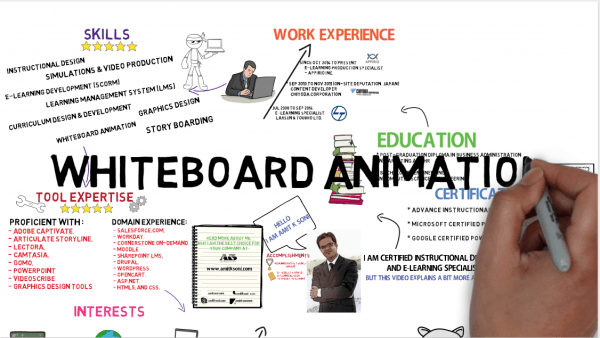Learn Why Animation Is Indispensable To eLearning
When we consider eLearning, you’ll see that eLearning too, has understood the power of the visual stimulus, and the best eLearning courses are largely visual. eLearning has no dearth of strategies and elements that engage with a learner’s visual faculty, but one of them reigns supreme over all of them. You’ve probably guessed it by now—animation.
There are countless types of animation, from traditional 2D animation to the popular 3D animation to advanced motion graphics, all of which can be used in eLearning. Animation can be used to explain even the most complex concepts, which makes it the perfect format for delivering eLearning content. But how do you use animation to its full potential? In this article, we’ll discuss just that, and help you decide on some of the best approaches.
Introducing Topics And Concepts
Animation grabs attention, and thus, it is a good idea to use animation at the beginning of a chapter or topic for an introduction. Animation can then be used to widen the content or subject matter. Starting your topic off with a visually appealing blast ensures that learners are paying attention, and thus, ready to absorb whatever you serve them next. If you think about it, you’ve probably seen the use of an animation yourself, maybe in an eLearning course itself or in an advertisement/promotional video.
Storytelling
Well, I’m sure that everyone would agree that animation is in fact, storytelling. The first animation ever created was nothing more than a set of continuous pictures being played in quick succession, but it got people hooked as it conveyed a story. Storytelling connects with learners emotionally, and this is a good strategy to use in eLearning if you want your learners to engage with and pay attention to your content. Animation can bring scenarios to life with little effort, something which cannot be done as convincingly using live-action videos. This is perhaps why the modern learner likes stylized, illustrative animations more than videos with live people.
Making Retention Of Complex Concepts Easier
As discussed before, animation simplifies otherwise complex concepts and information making them easier for learners to understand. Certain things, such as human or machine anatomy, economics or geographical events, could confuse learners if explained through only text, or even text and images. Using animation, Instructional Designers can replace walls of text (and images) too complex for learners to drill through, with aesthetically pleasing animation that is simple to follow. If a picture is worth a thousand words, an animation is worth a thousand pictures! (Technically it is a thousand pictures.)
Characterizing Famous Personalities
This is a great way to use animation to engage learners. There is no lack of famous personalities in the past or the present who motivate people. Unfortunately, many of them are dead (!), and those who aren’t may not always have said things in a way that would be relevant to the learner’s context. No worries! Using animation, you can create characters based on famous personalities, and have them say motivating stuff and use quotes or other useful information, thus bringing them to life. This is an amazing, effective and engaging visual alternative to text-based quotes or information.
Entertaining
Let’s face it, learning in the modern world has intertwined itself with entertainment, and you cannot help people learn unless you keep them not only engaged but entertained. Humor is something that never fails to entertain audiences, as it is a break from their serious day-to-day corporate monotony. Using certain animated characters as comedic relief helps to break up lengthy training sessions with a bit of humor. Unique characters, coupled with humor in animations, help to put visual context to the concepts they’re learning, keep their attention from dwindling, and make them more likely to recall learned information after training is complete.










